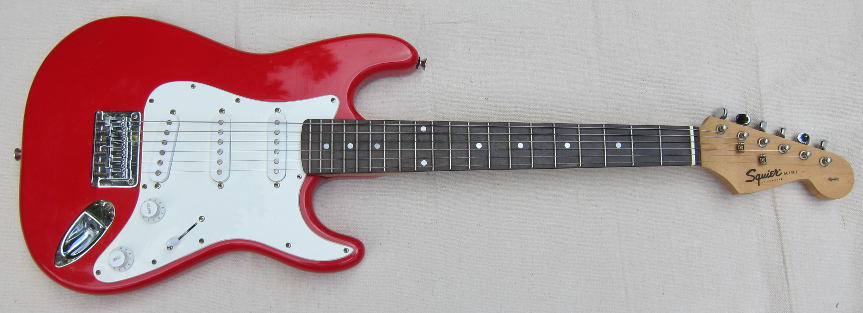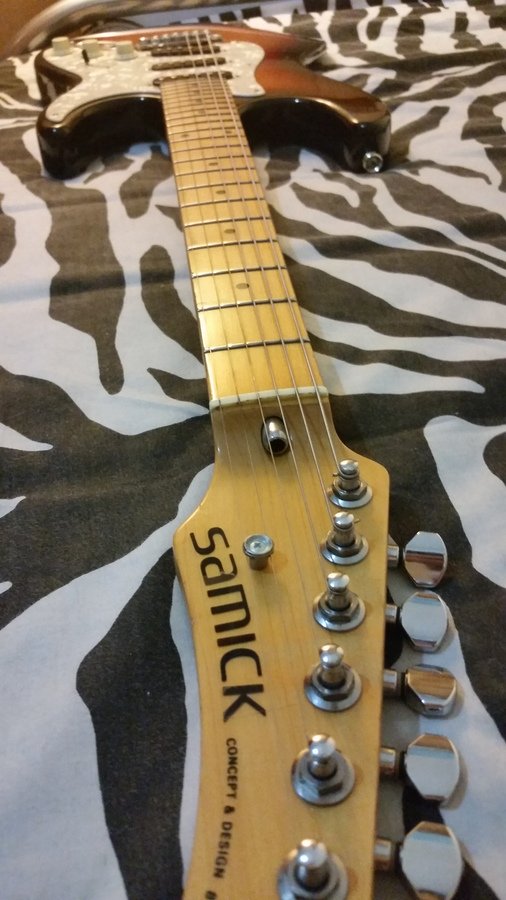Samick Bass Guitar Serial Numbers
Samick guitars have been radically redesigned by industry guru Greg Bennett to improve their sound and quality. They are known for their high quality, especially those produced in the 80s and 90s. By finding the year in which your guitar was made, you may learn that your guitar is worth more than you think, or is even a Samick antique.
Take pictures of your guitar with a digital camera. Useful shots for identification include a picture of the whole guitar body, the back, the neck, the bridge, the headstock, and the nut.
Samick Guitars
Jan 25, 2012 - 101 Basses » Best Bass Guitar Reviews » Bass Number 74 Samick P-Bass. Is the headstock logo stamp and a neck plate serial number.
The album was released by Atlantic Records in North American on 19 May 2014. The album get received mixed to positive reviews, with many critics praising the band's return to the more stripped-down and melancholy style fond in their earlier music, though some took issue with its lukewarm lyrical content. 
Behavioral advertising is based upon your web browsing activity over a period of time – so it's different than advertising you may see when you're looking for something online using a search engine (e.g., Google) or on the website you may be visiting at a particular time. Free autocad 2013 keygen. As an example, you may be doing research on products and services related to data Centre virtualization.
This product was tested in Poser 7 on a PC. Not tested on a mac. The morphs and textures will also work in Daz Studio but textures will need to be manually. Daz poser mrl aislinn.
Take a picture of the serial number, which is often found inside of the guitar or on the headstock.
- Mar 21, 2015 Help identifying Samick / Greg Bennett Bass Discussion in 'Basses [BG]' started by craigbeal, Jun 4, 2011.
- What is the serial number on it? Some of the Samick guitars' serial numbers start with the last two digits of the year made as the first two digits of the serial.
Upload the pictures using a USB adapter cord; most digital cameras today come packaged with USB adapter cords, but they can be found anywhere cameras are sold. Save the pictures of your guitar in your pictures folder.

Email the pictures to the makers of the guitar at info@smcmusic.com. Attach the pictures to the email and explain any relevant information about your guitar in particular. Specify that you want to know the year the guitar was made.
Samick Guitar
Warning
The experts at Samick (Greg Bennett guitars) warn on the company website that even with photos, they may not be able to identify the year the guitar was made.
Korean based Samick Musical Instruments Co, Ltd. is one of the world’s largest producers of musical instruments.| 1960's Samick bass |
You may be playing an instrument made by the Samick factory and do not know it. With a manufacturing capability of more than one million guitars per year in factories in Korea, Indonesia, China, and the United States, Samick also ranks as the world's leading stringed instrument producer.
Samick has manufactured guitars for many other companies, including Fender and Gibson.
Additionally, this manufacturer produces a full range of pianos, electric and acoustic guitars, basses, banjos, autoharps, harmonicas, and other instruments. It also operates a dedicated Upright Piano and Piano Action plant, as well as its own sawmill and woodworking facility in Korea, a smaller factory in California, and a plant in Harbin, China that produces wooden guitar and piano parts.
| Samick Founders |
 Samick was started in 1958 with the goal of enriching human life through music, the universal language. Hyo Ick Lee founded the company as an importer of Baldwin pianos to Korea. Within two years Samick began building their own upright pianos, using imported parts.
Samick was started in 1958 with the goal of enriching human life through music, the universal language. Hyo Ick Lee founded the company as an importer of Baldwin pianos to Korea. Within two years Samick began building their own upright pianos, using imported parts.In 1965, during the Folk Music years and the British Invasion years, when every kid wanted a guitar, Samick began production of acoustic guitars for the Korean market as well as for export to fulfill the demand for cheap Asian-made guitars that overwhelmed the market during this decade.
Samicks goal was toward a higher quality market. The company continued to improve its piano manufacturing techniques, and in 1970 its production abilities had developed sufficiently for it to launch its first grand pianos.
| Hondo Guitars |
| Hondo II SD Curlee |
In 1971 Samick introduced a line of harmonicas.
And in 1973 Samick was diversified in its production and changed its name to the Samick Musical Instruments Mfg. Co. Samick’s thrust was the export market, especially the United States. To facilitate this, a branch office was opened in 1978 in Los Angeles California.
The lower production costs of Korean-manufactured instrument made them attractive to entry level buyers. This was especially true in the piano market since costs of US made pianos had escalated. In fact in 1979, Samick was building the Schumann piano brand for US households. During these years, the Korean musical instrument industry had caught up to its primary competition, Japan, and due to lower construction cost had surpassed them.
In 1979 Samick had developed new automated production facilities that reduced the need for skilled employees and increased production with the benefit of maintaining quality standards.
By 1982 Samick opened a branch office in Germany to introduce their brand to the European market. That same year they established a full U.S. subsidiary known as Samick Music Corporation.In 1988 Samick went public, listing shares on the Seoul stock exchange.
That same year they purchased the Kohler and Campbell piano brand. The company had claimed the number one spot for grand piano sales by the end of 1995.
Faced with economic issues in Korea and most of Asia, in 1996 the company filed for bankruptcy protection.
The company had become too diversified with investments in furniture, computers, industrial equipment and the fishing industry; they were unable to make a profit and had a debt of nearly $10 million.
The Squier brand was developed in 1982 and early on all production was based in Japan. The first Squier guitars to emerge from Korea started as early as 1986. You can determine if your Squier was made by Samick was through its serial number that began with an “S” or “S9” followed by six digits. Samick began production of Squiers in 1989.
| M-72 |
In the 1990’s Fender had acquired the DeArmond brand name. Initially this brand was introduced in Europe. In the late 1990’s, Fender offered DeArmond guitars for sale in the United States.
| DeArmond Starfire |
They are excellent quality instruments that come with reproductions of DeArmond 2K or Goldtone pickups.
Your DeArmond will have a sticker on the back of the head stock noting if it was made in Korea or Indonesia. In 1983 Epiphones were mainly manufactured in Korea.
By 1986 Gibson Guitars was acquired by Harvard MBAs, Henry Juszkiewicz, David Berryman and Gary Zebrowski, bought Gibson/Epiphone from ECL/Norlin. The new owners recognized the importance of the Epiphone brand and how the company could be pushed to match the success of other Asian guitar brands.

| Samick built Epiphone Joe Pass |
These Epiphone guitars were constructed using different woods, for example Nato instead of Mahogany. Bodies were fastened with epoxies instead of wood-glue. Finishes tended to be polyester resin instead of nitro-cellulose lacquer. Some parts are made of plastic, such as nuts and bridge saddles instead of bone. Cheaper hardware and pickups were sometime used.
In 2002 Gibson moved all of its Epiphone production to Qingdoa, China.
One method of determining if your Epiphone guitar was made by Samick is its serial number. There may or may not be a factory code. There may be no factory designator for some models made in 1993 and earlier years.
Like Epiphones, Samick instruments generally start with an “S”. For example S3021234 is indicative of Samick-S-1993-3-February-02-unit 1234. If it begins with SI, that means it was made by Samick in there Indonesian plant.
Currently Samick produces Greg Bennett Design guitars, Silvertone Guitars, San Mateo Guitars (a budget brand) and Stony River Guitars (also a budget brand).